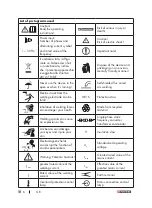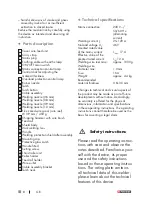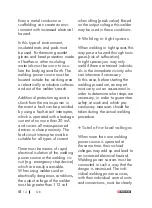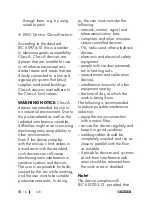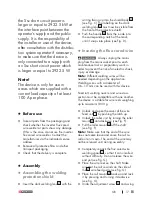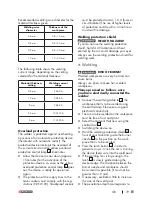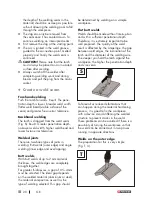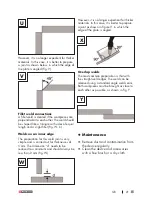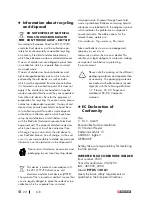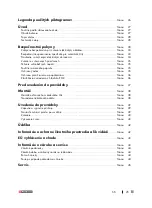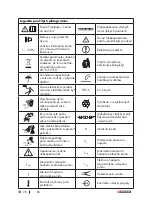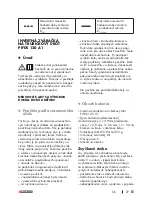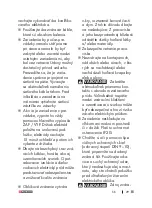
20
GB
the depth of the welding seam in the
material) should be as deep as possible
without allowing the welding pool to fall
through the workpiece.
The slag can only be removed from
the seam once it has cooled down. To
continue welding an interrupted seam:
First remove the slag at the starting point.
The arc is ignited in the weld groove,
guided to the connection point, melted
properly and finally the weld seam is
continued.
CAUTION!
Please note that the torch
must always be placed on an insulated
surface after welding.
Always switch off the welder after
completing welding work and during
breaks and pull the plug from the mains
socket.
z
Create a weld seam
Forehand welding
Push the torch forwards. Result: The pene-
tration depth is lower, broader weld width,
flatter weld bead (visible surface of the
seam) and greater fusion error tolerance.
Backhand welding
The torch is dragged from the weld seam
(Fig. S). Result: Greater penetration depth,
narrower weld width, higher weld bead and
lower fusion error tolerance.
Welded joints
There are two-basic types of joints in
welding: Butt welds (outer edge) and angle
welding (inner edge and overlapping).
Butt welds
With butt welds of up to 2 mm material
thickness, the weld edges are completely
brought together.
For greater thicknesses, a gap of 0.5–4 mm
must be selected. The ideal gap depends
on the welded material (aluminium or steel),
the material composition as well as the
type of welding selected. This gap should
be determined by welding on a sample
workpiece.
Flat butt welds
Welds should be made without interruption
and with a sufficient penetration depth.
Therefore, it is extremely important to be
well prepared. The quality of the weld
result is affected by: the amperage, the gap
between weld edges, the inclination of the
torch and the diameter of the welding wire.
The steeper you hold the torch against the
workpiece, the higher the penetration depth
and vice versa.
S
To forestall or reduce deformations that
can happen during the material hardening
process, it is good to fix the workpiece
with a device. Avoid stiffening the welded
structure to prevent cracks in the weld.
These problems can be avoided if there is a
possibility of turning the workpiece so that
the weld can be carried out in two passes
running in opposite directions.
Welds on the outer edge
The preparation for this is very simple
(Fig. T, U).
T

